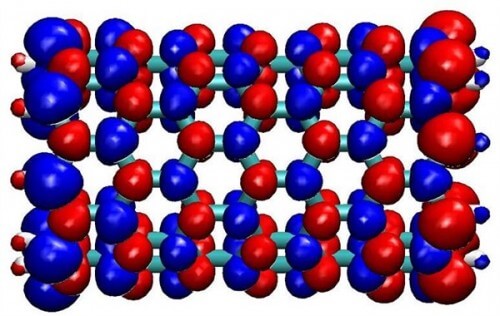The research group led by Prof. Lior Klein, Head of the Department of Physics and the Nanotechnology Institute at Bar-Ilan University demonstrated for the first time the possibility of using "spin currents" for the purpose of writing multi-state magnetic memory, which promotes a new way to miniaturize computer memory

The research group led by Prof. Lior Klein, Head of the Department of Physics and from the Institute of Nanotechnology at Bar-Ilan University, in collaboration with Dr. Shubhankar Das and other students, demonstrated for the first time the possibility of using "spin currents" for the purpose of writing multi-state magnetic memory, thus promoting a new path To minimize the memory used by the computer. An article about the research was recently published in the journal Nature Scientific Reports.
Magnetic random access memory (MRAM) is one of the main technological contributions of spintronics, which is a vibrant research field exploring ways to develop modern electronic devices that use not only the charge of the electron but also the fact that each electron is also a tiny magnet known as spin. The great interest in MRAM stems from the fact that it is non-volatile, fast, preserved for a long time and can be written repeatedly many times. The basic memory unit of this memory is a magnetic tunnel junction consisting of two magnetic layers separated by a thin insulating layer. The magnetization of the two layers is parallel or anti-parallel and these two magnetic configurations represent two memory states.
In a previous study published in the journal Applied Physics for Terez, Prof. Klein's group proposed a way to create a tunnel junction with a greater number of states, thus paving the way for the creation of a multi-state magnetic memory that allows storing more information in the same volume, thus providing an important answer to the constant growth in the need to store More information in energy efficient non-volatile memory devices. From the findings of the new research it appears that the multi-state magnetic memory can be written efficiently using 'spin currents' - something that makes it more technologically applicable.
Prof. Klein explained the importance of writing using spin currents. According to him: "An important requirement of magnetic memory is to have an efficient method for writing the magnetic configuration even when these devices go from miniaturization to sub-micron scales. Early memory devices used magnetic fields created around a current-carrying wire to write the memory. However, this method was abandoned because the minimization of the memory did not allow a corresponding reduction of the current strength required to produce the magnetic fields, which created overheating below a certain minimization threshold.
Prof. Klein added: "The method adopted instead was the injection of a stream of electrons whose average spin is not zero. This method allows for the reduction of the current intensity with the reduction of the memory component, but it turned out that the injection of the current also damages the tunnel junction itself. Therefore, there is great interest in switching from the use of electric charge currents to spin currents created in devices consisting of layers of a heavy metal such as tantalum with magnetic layers. This writing method does not damage the tunnel junction and is also energy efficient. The fact that spin currents are effective in writing the multi-state magnetic memory therefore increases the programmability of using the multi-state magnetic memory."

2 תגובות
The spin current is generated by flowing a charge current in the adjacent heavy metal layer, due to
.the spin Hall effect, which is attributed to the strong spin-orbit interaction in the heavy metal
It's just a shame that there isn't even a word about what spin currents are, which is the center of the matter